
17 10 23 31 11 Employee Wellness Trends For 2023 - Brett Farmiloe, Terkel.io Why 2023 Will Be About Fostering A Sense Of Belonging In Hybrid Environments - Neepa Patel, WellRight Employee Well-Being Is Everyone’s Responsibility - Jared Taylor, Edelman Four Biggest Trends In Addiction And Behavioral Health In 2023 - Dr. Yusuf Sherwani, Quit Genius DECEMBER 2022 • Vol.09 • No.12 (ISSN 2564-1980) Themed Edition on Workplace Wellness Trends 2023 5 WORKPLACE WELLNESS TRENDS TO LOOK OUT FOR IN 2023 - Laura Putnam, CEO, Motion Infusion


Articles 5 Workplace Wellness Trends To Look Out For In 2023 Employees will no longer settle for check-the-box wellness solutions – Laura Putnam, CEO, Motion Infusion 07 On the Cover INDEX Employee Benefits & Wellness Excellence DECEMBER 2022 Vol.09 No.12 34 Why Stop-Loss Insurance Is A Key Component In A Self-Funded Strategy Evaluating your company’s risk tolerance and budget is a good place to start – Paul Fortunato, Senior Director, Clinical Initiatives, RxBenefits, Inc. (ISSN 2564-1980) 15 HR Benefits Strategies For 2023 Here’s how employers can ensure their employees are positioned for success – Kim Buckey, VP of Client Services, Optavise 19 Combat Exhaustion And Recoup Your Energy Levels For 2023 Practical ideas to revive your spark – Anja van Beek, Executive Coach, Anja van Beek Consulting & Coaching 28 Top 5 Tips For Improving Your Workplace Financial Education Strategy Ensure your employees are happy, financially resilient, and set up for success – Jeremy Beament, Co-Founder and Director, nudge Global Themed Edition on Workplace Wellness Trends 2023
11 Employee Wellness Trends For 2023



Supporting parents, digital detoxing, setting boundaries and more
- Brett Farmiloe, Founder / CEO, CHRO, Terkel.io
Why 2023 Will Be About Fostering A Sense Of Belonging In Hybrid Environments
With flexible work here to stay, wellness programs need to respond
- Neepa Patel, Chief Executive Officer, WellRight
Employee Well-Being Is Everyone’s Responsibility

And getting it right starts with empathy
- Jared Taylor, Vice President, Edelman
17 23 31
Four Biggest Trends In Addiction And Behavioral Health In 2023
What employers should know - Dr. Yusuf Sherwani, CEO and Co-Founder, Quit Genius
Top Picks
10
INDEX
Benefits & Wellness Excellence - Monthly Interactive Learning Journal
This monthly interactive learning experience captures key metrics and actionable items and keeps you focused on your Benefits and Wellness planning goals and solutions.
Benefits and Wellness Virtual Events

Employee Benefits and Wellness Virtual Events ensure attendees stay compliant and up-to-date with the latest changes to employee benefits and wellness regulations. Each event varies on topics such as healthcare legislation and compliance related to employee benefits and workplace wellness programs including COBRA, FMLA, Medical Benefits, the Affordable Care Act (ACA), Outsourcing Benefits, Retirement Benefits, Voluntary Benefits and Work-Life Programs. Wellness topics encompass injury prevention, battling obesity, disease prevention, how technology is affecting wellness. Each Virtual Event consists of up to 10 credit webcasts.
Benefits and Wellness Webcasts for Credit

HR.com webcasts deliver the latest Benefits and Wellness industry news, research trends, best practices and case studies directly to your desktop. Webcasts are available live online with a downloadable podcast and a copy of the slides (PDF) available before and after each webcast. Earn all of the required recertification credits for aPHR, PHR, SPHR, GPHR, and SHRM Certifications. HR.com’s onehour webcasts, in every HR specialty including Benefits and Wellness, are pre-approved for HRCI and SHRM credit (excluding Demo webcasts).
Benefits and Wellness Community
Join more than 100,000 HR.com members with a similar interest and focus on Benefits or Wellness. Share content and download research reports, blogs, and articles, network, and “follow” peers and have them “follow” you in a social network platform to communicate regularly and stay on top of the latest updates. This well established Benefits and Wellness Communities are an invaluable resource for any HR professional or manager.
our Employee
How are
Benefits & Wellness Products and Services helping to make you smarter?
Use these invaluable Employee Benefits & Wellness resources today! For more information phone: 1.877.472.6648 | email: sales@hr.com | www.hr.com
Debbie Mcgrath

Publisher, HR.com
Emerging Employee Wellness Trends for 2023
Workplace well-being is transforming every day. And it’s important now, more than ever, to provide the right support to keep the health and well-being of your employees in check. Today’s workers, who are increasingly adopting flexible working practices, do not always have easy access to focused support. Organizations should prioritize employees’ mental and physical health, making it easily accessible to everyone, no matter where they work, to retain employees.
Also, well-being should not be considered a stand-alone program. Instead, organizations should incorporate well-being into everything that affects employees. As we move into the new year, it will be critical for employers to strategically foster a sense of belonging for remote, hybrid, and in-office workers alike.
How are current well-being initiatives doing? What are the emerging well-being trends for 2023?
Check out the December edition of Employee Benefits & Wellness Excellence which includes informative articles on employee wellness trends 2023, benefits strategies for the new year, tips for improving your employees’ health and well-being and much more.
Heading into 2023, many of the workplace changes that started in 2022 will gain momentum and become the new normal. What has become evident is that employees will no longer settle for check-the-box wellness solutions. Check out five workplace wellness trends to expect in 2023 in Laura Putnam’s (CEO, Motion Infusion) article, 5 Workplace Wellness Trends To Look Out For In 2023
Terkel.io's CEO/CHRO Brett Farmiloe has compiled 11 employee wellness trends for 2023, as shared by leaders. From piloting a four-day workweek to employer sanctioned sabbaticals,
Babitha
check out the predictions in his article, 11 Employee Wellness Trends For 2023.
As the macroeconomic environment is expected to be challenging in the coming year, it is increasingly important for employees to understand how they can obtain the needed care and financial protections without stretching their wallets to the breaking point. Kim Buckey’s (VP of Client Services, Optavise) article, HR Benefits Strategies For 2023, discusses ways to ensure employees are positioned for success.
Flexible work arrangements will likely continue to trend in 2023, particularly as they influence employee recruitment, retention, and general work/life balance. Check out Neepa Patel's (CEO, WellRight) article, Why 2023 Will Be About Fostering A Sense Of Belonging In Hybrid Environments for valuable insights on this topic.

As Jared Taylor (VP, Employee Experience, Edelman) in his article, Employee Well-Being Is Everyone’s Responsibility rightly puts it, "Improving employee well-being will only happen if everyone across the business, at all levels, takes responsibility. This includes HR and leadership, managers, and the individual."
Companies can and must start making small changes that shift the responsibility of well-being to all levels of the organization in 2023 and beyond.
We hope you enjoy reading all the articles in this edition of Employee Benefits and Wellness
Disclaimer: The views, information, or opinions expressed in the Excellence ePublications are solely those of the authors and do not necessarily represent those of HR.com and its employees. Under no circumstances shall HR.com or its partners or affiliates be responsible or liable for any indirect or incidental damages arising out of these opinions and content.
EDITOR’S NOTE
Excellence and look forward to your feedback/ suggestions. Happy New Year!
Subscribe now for $99 / year And get this magazine delivered to your inbox every month Become a Member Today to get it FREE! SIGN UP OR For Advertising Opportunities, email: sales@hr.com Copyright © 2022 HR.com. No part of this publication may be reproduced or transmitted in any form without written permission from the publisher. Quotations must be credited. Editorial Purpose Our mission is to promote personal and professional development based on constructive values, sound ethics, and timeless principles. Excellence Publications Debbie McGrath CEO, HR.com - Publisher Dawn Jeffers VP, Sales Sue Kelley Director (Product, Marketing, and Research) Babitha Balakrishnan and Deepa Damodaran Excellence Publications Managers and Editors Employee Benefits & Wellness Excellence Team Babitha Balakrishnan Editor Nataraj Ramesh Design and Layout (Digital Magazine) Vibha Kini Magazine (Online Version) Submissions
Correspondence Please send any correspondence, articles, letters to the editor, and requests to reprint, republish, or excerpt articles to ePubEditors@hr.com For customer service, or information on products and services, call 1-877-472-6648
Benefits & Wellness Excellence (ISSN 2564-1980) is published monthly by HR.com Limited, 56 Malone Road, Jacksons Point, Ontario L0E 1L0 Internet Address: www.hr.com
to the Editor at ePubEditors@hr.com
&
Employee
Write
Balakrishnan Editor, Employee Benefits & Wellness Excellence
In a world of unparalleled challenges (global pandemic, racial injustice, political rivalry, digital 4.0, emotional malaise), uncertainty reigns. Finding opportunity in this context requires harnessing uncertainty and harnessing starts with reliable, valid, timely, and useful information. The Excellence publications are a superb source of such information. The authors provide insights with impact that will guide thought and action.
Dave Ulrich
Rensis Likert Professor, Ross School of Business, University of Michigan Partner, The RBL Group

Excellence publications are my ‘go-to’ resource for contemporary and actionable information to improve leadership, engagement, results, and retention. Each edition offers rich and diverse perspectives for improving the employee experience and the workplace in general.
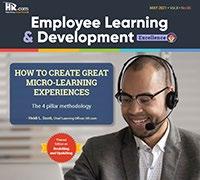

Julie Winkle Giulioni
Author, Virtual /Live Keynote Presenter, Inc.’s Top 100 Leadership Speakers

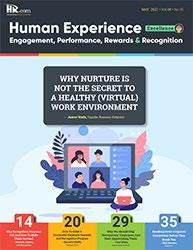
I regularly read and contribute to Leadership Excellence and Talent Management Excellence. I use many of the articles I read to augment my own presentations and I often share the articles with my clients. They are always quick, right on target for the latest issues in my field, and appreciated by my clients.
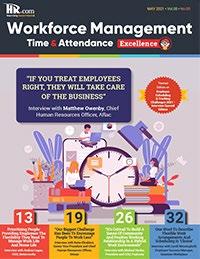

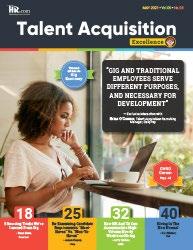
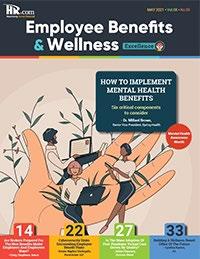
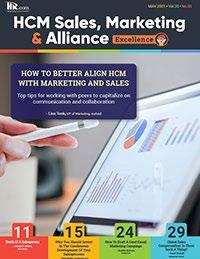
If you want to stay up to date on the latest HR trends, choose a few of the different issues from the Excellence series of publications.




 Dr. Beverly Kaye CEO,
Dr. Beverly Kaye CEO,
BevKaye&Co.

We’re eager to hear your feedback on our magazines. Let us know your thoughts at ePubEditors@hr.com WHY EXCELLENCE PUBLICATIONS?
5 Workplace Wellness Trends To Look Out For In 2023
Employees will no longer settle for check-the-box wellness solutions
By Laura Putnam, Motion Infusion
Over
the past 12 months, the working world has been flipped upside down. From starting the year with strict social distancing measures still in place to ending the year by reassuring employees it is safe to return to work, 2022 has been a year of dramatic changes.
Heading into 2023, many of the workplace changes that started this year will gain momentum and become the new normal. Below is a list of the top five workplace wellness trends to expect in 2023. What has become exceedingly clear is that employees will no longer settle for check-the-box wellness solutions. Rather, they’re demanding solutions that call for organizational restructuring, strong leadership commitment and well-being as a way of doing business.
1. Hybrid Work is Here to Stay
Starting in 2020, the pandemic ushered in a new way of working for the modern-day office worker. Technology companies like Yelp went from being businesses that were rooted in a downtown culture to businesses where employees could work from anywhere. A Gallup study conducted in June of 2022 found hybrid work increased in 2022 from 42% in February to 46% in June. While working remotely, or at a minimum, working in a hybrid environment, appeared to be a short-term solution to get us through the worst of the pandemic, it is evident that it is now here to stay.
This pandemic-induced opportunity to work in a more fluid environment has unwittingly revealed the human need for autonomy. It’s clear that all of us are hardwired for needing
flexibility in terms of where we work, how we work and when we work. With a tight labor market, employers will need to yield to this deep-seated psychological need, allowing their workforce to continue to work under this flexible arrangement, or risk the ability to attract and retain employees. A recent study conducted by YouGov and Microsoft shows that 51% of workers surveyed stated that they would leave if their employer took away the hybrid option.
2. The Rise of the Four-Day Work Week
Just as employees demanded control over where they work in 2022, a growing swell of employees are demanding more control over when they work. Don’t be surprised if many companies introduce a four-day work week next year in a bid to remain competitive in this red-hot labor market.
Submit Your Articles Employee Benefits & Wellness Excellence presented by HR.com DECEMBER 2022 7 COVER ARTICLE
The good news is that the four-day work week is likely a win-win for both employers and employees. A recent global pilot program involving more than 900 employees and 33 employers found workers reported increased levels of engagement and improved mental health when working a four-day schedule.
3. Mental
Well-Being Will
Continue to Take Center Stage
With rates of burnout, depression and anxiety at record levels, many employees will expect their employers to make employee mental well-being a priority next year. A recent report from Indeed found that 52% of all workers are feeling burned out, which represents a 9% increase from a pre-Covid survey.
Emboldened by a favorable labor market, employees expect their
workplaces to take meaningful action, which includes fostering an environment in which there is the freedom to feel and express emotions, according to a 2022 Deloitte report. The old-school adage that we should “check our emotions when we come to work” no longer holds true, especially as we move into 2023.
To meet the moment, employers will need to go beyond providing the traditional formula of identifying individuals at risk and providing them with individual resources, such as employee assistance programs or access to apps like Calm or Headspace. Instead, organizations and their leaders will need to radically rethink how they can create a supportive work environment that fosters mental well-being. This will call for leaders at all levels to
take a proactive role in openly speaking about their own mental health to destigmatize the topic, while also examining structural issues that lead to employee burnout and other mental health issues.
Next year, leaders will need to be ready to have more open conversations about mental health as a recent Monster.com survey found that 91% of generation Z employees reported they want to be able to freely discuss mental-health topics with their colleagues and managers. Newton Cheng, Director of Health and Performance at Google, is an emerging role model for other leaders to follow in publicly sharing his personal struggles with mental health and the measures he has taken to address these issues (which included taking a leave of absence).
5 Workplace Wellness Trends To Look Out For In 2023
Submit Your Articles Employee Benefits & Wellness Excellence presented by HR.com DECEMBER 2022 8
4. The Labor Movement Will Grow
Employees will continue to use their leverage to create stronger unions across many different sectors. In 2022, the labor’s surge began to yield big victories, such as the union campaigns at Amazon and hundreds of Starbucks stores across the country. Petitions to file union elections shot up nearly 60% and public approval of unions hit its highest point in half a century. This will likely lead to more protests, picket lines and walkouts and force employers to provide employees with greater say in their future. The recent push for unionization in some sectors, particularly among employees working in frontline positions, as well as the ‘Great Resignation’ and ‘quiet quitting’ phenomena, are similar manifestations of a drive toward improved work-life balance. Whether unionized or not, employees are voting with their feet – and employers are left with no choice but to respond.
5. Well-Being Is a Shared Responsibility
CEOs are recognizing that employee well-being needs to be a strategic priority. As recently shared by Francis deSouza, CEO of Illumina, at a recent CEO roundtable hosted by Fortune and Salesforce, “Employee wellness is an imperative. It is one of the criteria that people use to choose a job and whether or not to stay at a job or not.”

Alongside this rise in awareness of the importance of well-being at work, leaders also recognize that true well-being is a shared responsibility. Heading into 2023, more companies will begin to recognize that the over-reliance on individual responsibility and accountability cannot withstand the effects of structural barriers to well-being, such as work overload, toxicity in the workplace, perceptions of unfairness and lack of inclusion. Simply put: the only way forward is together
A key player in the execution of well-being as a shared
responsibility is the middle manager. Whether or not well-being is part of the job description, every manager is uniquely positioned to either promote or undermine their team members’ level of well-being. Longstanding Gallup research shows that the manager alone likely accounts for up to 70% of the variance of their team members’ engagement with well-being, and our own published data indicates that every manager can create a positive trickle-down effect with well-being when they model well-being, talk about it and create team-based systems that foster well-being. Being an effective leader means incorporating well-being into their leadership style.
Laura Putnam is a leading voice for well-being at work, an international public speaker and author of Workplace Wellness That Works. As CEO of Motion Infusion and creator of the leadership training program Managers on the Move, she infuses well-being and vitality into the workplace to help employees, teams and organizations thrive.
Would you like to comment?

5 Workplace Wellness Trends To Look Out For In 2023
Submit Your Articles Employee Benefits & Wellness Excellence presented by HR.com DECEMBER 2022 9
11 Employee Wellness
By Brett Farmiloe, Terkel.io
Enact a Four-Day Workweek
Business leaders who are paying attention to employee wellness and workplace trends should be considering how to make the four-day workweek work in their organization. Productivity is often tied to work schedules. Employees have shown in a variety of industries that they can accomplish a "full-time" workload in four workdays when offered the opportunity.
Employees always have the choice to apply discretionary effort on the job, meaning putting in a bit more work to be efficient and effective. When asked to accomplish their five-day workload in four workdays (while they maintain their full-time pay) employees are willing and able to dig deep and consistently perform at or above expectations.

Making this concept a reality in various industries will absolutely have a positive effect on employee well-being.
Ramirez, Founder & Principal Consultant, HRAnswers.org

to
sanctioned sabbaticals,
them?"
Enact a Four-Day Workweek
Provide Healthy Meal-Kit Delivery Services
Discuss Burnout and PTSD More Openly
Offer a Range of Digital Wellness Solutions
Promote Digital Detoxing
Increase Support for Parents ● Prevent Musculoskeletal Issues
Personalize Your Approach
Help Employees Manage Their Time and Resources ● Set Boundaries ● Encourage Employer-Sanctioned Sabbaticals Supporting parents, digital detoxing, setting boundaries and more
From piloting a four-day workweek
employer-
here are the 11 answers to the question, "What are a few employee wellness trends you predict for 2023, and how is your company approaching
●
●
●
●
●
●
●
●
For 2023
Trends
Submit Your Articles Employee Benefits & Wellness Excellence presented by HR.com DECEMBER 2022 10 TOP PICK
Niki
Provide Healthy Meal-Kit Delivery Services

To keep our fully remote staff team connected, our company has incorporated a bi-weekly benefit in 2023. We will supply the team with prepared meal-kit service deliveries to ensure they have healthy food choices.
Normally, we would have had lunch meetings together, but with the pandemic and expanding our team nationally, we feel this is a great perk for all. Besides, it is so easy to forget to eat (which I am often guilty of) so we are hoping this will help the team curb eating fast food and help with their grocery bill. Plus, we will sit and eat together during our daily "Watercooler Meetings" video calls.
LT Ladino, CEO & Founder, vCandidates.com
Offer a Range of Digital Wellness Solutions





I predict that, in 2023, employee wellness will be more digitally integrated than ever. Companies will need to ensure that their employees are getting the right amount of physical and mental health breaks, as well as having access to relevant resources and support systems remotely.
At our company, we are already taking steps towards this goal by offering a range of digital wellness solutions. We are providing our employees with access to remote health check-ins, virtual fitness classes, and digital mental health resources through our employee well-being platform.
By 2023, we plan to have a fully integrated employee wellness program that will ensure our employees' physical and mental health is at the forefront of the company's objectives. We are confident that these efforts will lead to an improved work environment that supports an engaged and productive workforce.
Discuss Burnout and PTSD More Openly
In the past, wellness programs have helped employees manage their stress levels and understand the connection between their physical and mental health. However, these programs are now growing to include the need to provide employees with tools and resources to cope with the psychological effects of the Great Resignation.
One way that we are approaching this is by providing our employees with the tools and resources to cope with the inevitable changes that are taking place in the world around them.
We have focused on helping our employees to cope with the effects of the pandemic by providing them with education on what Post Traumatic Stress Disorder (PTSD) is and how it affects people. We have also created a space for them to share their experiences and to process the emotions that they are experiencing because of witnessing people they know resigning or being laid off.
Matthew Ramirez, CEO, Rephrasely
 Linda Shaffer, Chief People Operations Officer, Checkr
Linda Shaffer, Chief People Operations Officer, Checkr

11 Employee Wellness Trends For 2023
Submit Your Articles Employee Benefits & Wellness Excellence presented by HR.com DECEMBER 2022 11
Promote Digital Detoxing
As an MD and the HR director, I am always mindful of workplace health and the importance of employee wellness. I've been monitoring wellness trends, and I predict that digital detoxing breaks will be incredibly popular in 2023.

As technology pressurizes us more and more, it will be important to take time away from digital consumption now and then. My company is already ahead of the game in this area—we encourage regular digital detoxing by providing a day off to all staff when they can interact with their family, and friends, or even just have “me-time" offline.
We also have healthy lunch boxes available regularly throughout the week, which helps de-stress during stressful periods at work. As a result, this helps everyone stay healthier and better equipped for our roles.
Rosmy Barrios, Director, Health Reporter

Increase Support for Parents
We predict a shift in the attitude towards working parents and companies providing a wider and more supportive package of tools.
This might look like plugging the widening gaps we're seeing in affordable access to childcare through partnering with companies who connect parents with local providers; increased training for line managers to truly understand the needs of their employees and how to support them not only during the immediate return to work but beyond; and access to parenting apps and digital tools as standard in the parental policy.
We will continue to implement our remote first policy and work with any team members planning parental leave to support them with bespoke packages for their families. We are also partnering with businesses so our team can be provided as a benefit for their working parents, supporting them from birth to five years to show long-term investment and care in their family's well-being and seeing them as more than "just an employee."
Jessica Higham, Marketing Manager, Onoco

11 Employee Wellness Trends For 2023
Submit Your Articles Employee Benefits & Wellness Excellence presented by HR.com DECEMBER 2022 12
Prevent Musculoskeletal Issues
Employee wellness will emphasize preventing musculoskeletal issues and injuries caused by prolonged sitting. Because of the pandemic, most employees, especially remote workers, work at their computers for hours. This has led to neck, shoulder, and back pain, circulation issues, sciatica, eyestrain, and headaches.
To combat the ill effects of prolonged sitting, educate employees on taking breaks from sitting every 25 minutes and doing eye relaxation exercises. Hire a fitness expert to teach exercises and mobility stretches that improve posture and prevent or ease nerve issues and body pains.
Invest in some standing desks so employees can stand while working. Provide under-desk ellipticals in your office so your staff can engage in some movement even while sitting down.
Peter Hoopis, Owner & CEO Hoopis Group and Peter Hoopis Ventures

Help Employees Manage Their Time and Resources
Ensuring employee wellness starts with helping them best manage their time and resources. If employees are consumed with hectic schedules or spend all their time in meetings, it’s not likely any sort of wellness program will thrive.
A couple of ways we promote wellness is by encouraging employees to block off their calendars for one hour a day—and to use this time for themselves. They can spend this time working out, running errands, or unplugging entirely.
Our company also gives every employee the second Friday of each month completely off. An extended weekend away from work gives employees the opportunity to fully recharge in whatever ways they see fit.
Andrea Lagan, COO, Betterworks


Personalize Your Approach
As employees are more and more wishing for wellness programs at work, the primary trend we are already seeing is that they are pulling out all the stops to get started implementing them.
The old paradigm of on-site fitness centers and free lunches will give way to a more personalized approach featuring dedicated coaching teams and hybrid exercise programs.
As a wellness consultant and program provider, I am already witnessing this trend as we continue to usher our clients through the changes in work-life that have emerged as a result of the pandemic.
Thriving wellness programs that drive the best ROI will take the personalized approach and continue to connect the workforce with one another through group outings, group programming, social circles, and an emphasis on mental health.
Wendy Chamberlain-Cooper, Founder & CEO, ProMotion Training Systems, Inc.
11 Employee Wellness Trends For 2023
Submit Your Articles Employee Benefits & Wellness Excellence presented by HR.com DECEMBER 2022 13
Set Boundaries
One employee wellness trend I predict (and hope for) for 2023 is more boundary-setting. Employees are worn out, overworked, and need better worklife integration.
With hybrid work and flexible hours becoming the norm, this can lead to unspoken pressure to work outside of your own hours or take on additional work. Leaders need to help make boundaries normal and accepted in the workplace. To do so, they should first be vocal about their own boundaries to lead by example. Second, they should have a meeting with their team to talk about boundaries and set expectations.
For example, email communication can cause a lot of stress and overwork. During a conversation about this, a team can create a consensus that after 5 pm, employees are not expected to be checking their email. If there is a truly urgent matter, the sender will phone the person they need information from. This is an example of how to set up expectations that are clear for the entire team.
Encourage Employer-Sanctioned Sabbaticals
One employee wellness trend I predict for 2023 is an increase in the number of employers offering extended time away from routine work for rest and renewal: sabbaticals
Mid-career sabbaticals have tripled over the past four years (SHRM), and employers have an opportunity to leverage this trend to increase employee engagement and retention by offering a formal sabbatical program.
Tip: build a company culture worth coming back to after a sabbatical to fully realize the benefits of time off.
Although most sabbaticals are one month or longer, I also predict that more companies will start offering mini-sabbaticals between jobs as a perk. Instead of starting immediately, new hires will be given a few weeks of paid time off after leaving their old company and before starting at their new company.

 Lydia Di Francesco, Workplace Health & Performance Practitioner, Fit + Healthy 365
Lydia Di Francesco, Workplace Health & Performance Practitioner, Fit + Healthy 365

Would you like to comment?
Albert Wavering, Sabbatical Guide, Albert Wavering
Brett Farmiloe is the Founder / CEO and currently the CHRO of Terkel.io
11 Employee Wellness Trends For 2023 Submit Your Articles Employee Benefits & Wellness Excellence presented by HR.com DECEMBER 2022 14
HR Benefits Strategies For 2023
Here’s how employers can ensure their employees are positioned for success
By Kim Buckey, Optavise
Now that open enrollment is behind most employers, HR teams can take a bit of a breather before the spring brings a new cycle of benefits planning. But that doesn’t mean sitting back and doing nothing! HR teams can take the following important steps to ensure their employees are making the most of their 2023 elections, and that they make the right decisions for 2024.
First, Communicate
Employee health literacy remains at disturbing low levels. According to a consumer survey by Optavise, 33% of consumers want to know how their deductible, copay or coinsurance, and out-of-pocket maximum (OOPM) work and what these factors mean for their wallet. Additional key survey highlights:
● 39% want to know how to avoid surprise medical bills
● 29%want to know how to research healthcare costs and why it matters,
● 22% want to know how to choose where to get care
Having a solid communication plan helps to educate employees and to ensure employees know how to effectively use the plans to make more informed, cost-effective decisions. Since employees use their benefits year-round, conversations about those benefits should also be happening year-round. Key areas of a communications plan typically include education on healthcare basics, promotion of existing plans, and education about the available resources.
Now is a great time to revisit basic terms and concepts and to remind employees of the low (or no) cost care options available to them throughout the year, including
preventive care, employee assistance programs, and onsite clinics (where available).
While a Pew Research Center survey revealed that 23% of employees who left their jobs in 2021 cited poor benefits as a reason for looking for new opportunities, it’s likely that employee perception of “poor benefits” may be a knowledge issue. Benefits are now influencing retention and hiring like never before. It’s critical to promote the depth and breadth of your program offering, as well as the resources available to help employees use those programs effectively.

Submit Your Articles Employee Benefits & Wellness Excellence presented by HR.com DECEMBER 2022 15
Tools and resources, including cost estimators and benefits advocates can provide the information employees and their families seek while demonstrating the value of shopping for care by identifying meaningful savings opportunities.
Listen to Employee Feedback
Remember, communication is a two-way street. That means listening to employee concerns about their benefit plans. Questions you might want to consider: are your current offerings meeting their needs? Are employees asking for benefits or programs you don’t currently offer—or DO offer, but your employees are somehow unaware of? What are your employees still confused about?
Feedback may be direct (focus groups, surveys, emails to HR) or indirect (calls to customer service, questions to benefits advocates, low program utilization, administrative issues due to paperwork errors, etc.). A careful analysis will show what benefit strategy tweaks should be considered to provide more, or clearer communication as you plan for 2024.
Gather Your Team
Today’s HR teams are already managing many areas, including recruitment, retention, return to work protocols, and other priorities. It is critical to have a team of trusted partners to fill in the gaps and allow HR to focus on strategic areas. For many employers, brokers are
providing that support, either directly or indirectly (by identifying outside partners).
For example, a recent survey by Optavise showed that 95% of brokers are reporting moderate to high demand for help with benefits communications and 77% are seeing similar demand for healthcare transparency and advocacy support. Further, brokers have seen almost a 60% increase in clients adding voluntary benefits in response to employee demands and recruiting pressures.

Employers are also relying on brokers for help with ERISA and ACA compliance and reporting. Seventy-three percent of brokers say their clients rely heavily on them to provide compliance services. Demand is likely to increase as new regulations become effective and the need to create materials and reports, such as employer shared responsibility reports required by the ACA, summary plan descriptions, surprise billing notices, etc.
Brokers can also vet and recommend outside partners to assist with onboarding, communications efforts and year-round employee support. Benefits educators can answer employee questions about their benefits and enroll new hires; advocates can work with employees to resolve billing questions, find providers and arrange appointments, help patients navigate their diagnoses and treatment recommendations
and identify cost-effective treatment options.
By partnering with brokers and other external partners, employers can ensure their employees are receiving accurate and consistent benefits messaging, as well as individualized support to manage their health and their wallets.
Having this team in place well before planning begins for the next plan year can ensure that all parties are aligned and primed to make next year’s enrollment a success.
As the macroeconomic environment is expected to be challenging in the coming year, it is increasingly important for employees to understand how they can obtain the needed care and financial protections without stretching their wallets to the breaking point. By listening to employee concerns, communicating year-round, and having a strong team in place to assist both HR and the workforce, employers can ensure their employees are positioned for success this year and in the future.
HR Benefits Strategies For 2023
Kim Buckey is the VP of Client Services at Optavise Would you like to comment?
Submit Your Articles Employee Benefits & Wellness Excellence presented by HR.com DECEMBER 2022 16
Why 2023 Will Be About Fostering A Sense Of Belonging In Hybrid Environments
By Neepa Patel, WellRight
These days, it seems like “the office” is everywhere. From kitchen tables to coffee shops (and even back to cubicles), employees have been getting work done wherever—and whenever—they can.
And most are enjoying the flexibility. More than 60% of employees across all generations say flexible work arrangements make them feel more empowered, an Envoy Return to the Workplace report revealed. Additionally, the vast majority of Gen Z (75%) and millennial (76%) employees prefer hybrid or remote work structures to being in the office full-time, according to Deloitte’s 2022 Global Gen Z and Millennial survey.
Flexible work arrangements will likely continue to trend in 2023, particularly as they influence employee recruitment, retention, and general work/life balance. However, hybrid work presents challenges in other areas of whole-person health—most notably, social well-being.
One-third of employees say feeling disconnected from coworkers and the lack of social interaction are
the biggest challenges they face with remote work, according to the CCS Insight Employee Workplace Technology survey. In fact, that topped the list of concerns among respondents.
Adding the fact that the pandemic negatively impacted social connectedness across the world, it’s clear that employers need to bolster employee bonds.

With flexible work here to stay, wellness programs need to respond
Submit Your Articles Employee Benefits & Wellness Excellence presented by HR.com DECEMBER 2022 17 TOP PICK
As we move into the new year, it will be critical for employers to strategically foster a sense of belonging for remote, hybrid, and in-office workers alike.
DEI and Social Well-Being Need to Keep Up
Social connection is an important aspect of whole-person wellness. When people feel disconnected from others, it can lead to stress and anxiety. Of particular concern for businesses, it also leads to decreased productivity and increased attrition.
In 2023, employees’ perception of inclusion will depend on how their employers deliver on their diversity, equity, and inclusion (DEI) initiatives. A successful and sustainable DEI strategy will focus on creating a welcoming working environment for all employees—regardless of where that environment is physically located.
Employers have already taken notice of the important role DEI plays in well-being. A 2021 Willis Towers Watson employer survey indicated that 69% of organizations planned to expand diversity and inclusion initiatives in their well-being programs over the next three years.
Now is the time to reevaluate how DEI initiatives are resonating with employees, especially since remote and hybrid work policies likely have not changed since the beginning of the pandemic. As the needs of hybrid workforces continue to evolve, so too should your strategy to address those needs.
Anonymous surveys can help identify and address employees’ desires. Creating opportunities for direct feedback among employees, managers, and leadership can also drive a sense of purpose and a feeling of connection.
Every employee base is unique, and not all offerings will resonate with every employee. However, there are general best practices for how organizations can support social well-being in a hybrid environment.
Sponsor and Promote Employee Resource Groups (ERGs)
In 2021, about 40% of companies had ERGs—a 9%
jump from 2020, according to Sequoia Consulting Group. These groups are vital parts of DEI programs. They can bring together various groups of people— including those based on gender identity, religious affiliations, or shared interests. In the era of hybrid and remote work, it is particularly important to offer virtual meeting spaces for ERGs and support both in-person and remote gatherings.
Encourage Volunteering
Roughly half (51%) of companies currently conduct volunteer days as part of their social well-being programs, according to an Aon report. This encourages face-to-face interactions for employees who are typically remote and also gives them a sense of connection to their communities. For remote employees, offering volunteer time off so workers can contribute their time to causes they believe in without taking an unpaid day also fosters connection.
Employers of choice recognize that remote and hybrid work is here to stay—and they realize their DEI and overall social well-being programs need to keep pace. Doing so will empower workers to reap all the benefits of hybrid arrangements without losing a sense of connection.
Neepa Patel is the Chief Executive Officer at WellRight and joined the team in 2021. With over 25 years of experience in healthcare strategy and business development, Neepa has previously held executive positions at the BCBS Association, AIM Specialty Management, Evolent Health and IPG during periods of high growth and rapid change. With a strong understanding of both the challenges and opportunities facing the wellness industry, Neepa is uniquely skilled to lead WellRight's next phase of growth.
Would you like to comment?

Why 2023 Will Be About Fostering A Sense Of Belonging In Hybrid Environments
Submit Your Articles Employee Benefits & Wellness Excellence presented by HR.com DECEMBER 2022 18
Combat Exhaustion And Recoup Your Energy Levels For 2023
Practical ideas to revive your spark
By Anja van Beek, Anja van Beek Consulting & Coaching
Many South Africans are currently concerned about the energy crisis and the impact of load-shedding on the economy. An even bigger concern is the global trend of exhaustion and low energy levels in the workforce.
When I speak to leaders and managers, there are a few words that continue to be mentioned in conversations and they are “fatigue/exhaustion/ burnout”.
This isn’t surprising.
Many of us started 2022 in survival mode; still recovering from the challenges and changes the pandemic brought. We were expected to deliver our best this year… but in fact…many were still recuperating and adjusting to what the new working world will look like.
Fast
Forward to Now
Burnout is a global concern. It refers to feelings of energy depletion or exhaustion. It is an increased mental distance from one’s job, feelings of negativism or cynicism related to one's job, and reduced professional efficiency.
A new study by Asana, looked at over 10,000 knowledge workers across seven countries and found
approximately 70% of people experienced burnout in the last year.
Burnout is hard on people, and it also hurts businesses. According to the Asana study, when people experience burnout, they are more likely to have lower morale (36% of people), be less engaged (30%), make more mistakes (27%) and miscommunicate (25%). They are also more likely to leave the company (25%).
Another study done by Deloitte, the Workplace Intelligence research, found that 47% of employees have quit in the past when a job negatively affected their well-being, and 57% are considering quitting to find a role that better supports their well-being.
Getting Ready for the December Break
When we look back at the year filled with challenges and disappointments, you might look forward to this holiday break as an essential opportunity to renew your energy. As a leadership coach, I call high-performers: Corporate Athletes. They understand the importance of balancing stress (energy expenditure) with recovery (energy renewal). They too need the necessary time and energy to rest and more importantly, rest well.
The way you take care of your body has a huge impact on your ability to perform under pressure.
Submit Your Articles Employee Benefits & Wellness Excellence presented by HR.com DECEMBER 2022 19
To be effective at work, we must first ensure we have the ENERGY required to make an impact.
Here are some practical ideas to revive your spark and energy levels during the holidays.
1. Get Outside
If you are going away, make the most of the walking trails at your destination. Staying at home? Get your hands dirty and work in your garden.
The holidays are a good time to naturally enhance the neurotransmitters in your brain. Spending time in Nature, and getting a good dose of vitamin D, can naturally increase these neurotransmitters.
2. Make SLEEP a Priority
It is super tempting to burn the candle at both ends during the holiday season. Holiday schedules can be jam-packed and late nights with family and friends is part of the fun. However, if you are serious about your energy recovery, it is critical to ensure you get sufficient sleep to ensure your body can function optimally when you are back at work.
Post-holiday fatigue is a real thing, so let’s make sure you “don’t need a holiday after your holiday”. So, take those afternoon naps!
3. Laughter Remains the Best Medicine
Nothing works faster to bring your mind and body back into balance than a good laugh. Be intentional about creating opportunities to laugh.
Arrange a game night with friends, watch a funny movie or play with your pet. Remember that smiling is the beginning of laughter, and like laughter, it's contagious. So, it might even just be to give a quick smile to a stranger in the grocery queue in front of you.
4. What is Your Time Worth?
Time is the currency of your holiday (and life), so spend it wisely. Intentionally be aware of what you spend your time on.
An easy tool to determine if something is worth the time, start with getting a number (rand value) of what an hour of your time is worth. A tip is to make your value comfortably high. Now, you can calculate what scrolling on social media or binge-watching a Netflix series is costing you.
You might see that taking care of your health, preparing nutritious meals, giving attention to your spouse or doing things for others, is a better return on your time investment.
Combat Exhaustion And Recoup Your Energy Levels For 2023
Submit Your Articles Employee Benefits & Wellness Excellence presented by HR.com DECEMBER 2022 20
5. Slower and Softer
Yes, for some of us the holiday season is chaotic and can be stressful. It is tempting to go all out and a sense of lack of control can feel overwhelming. We don’t need to rush everywhere.
We often overlook the importance of getting the basics in place. You can spend hours searching for, making, or wrapping presents. Create a few simple holiday rituals for your family. Be PRESENT for your loved one over finding perfect things.
On another point, are you worried that you may struggle to cope with energy-draining holidaymakers, in-laws, or nagging neighbors? It is not the behavior of others that leads to your annoyance -- it is the story you tell yourself about their behavior that leads to your feeling.
Do you want to reclaim your peace? Consider what is the story you are telling yourself about their behavior
and think about when you also displayed a similar type of behavior this will support you to move from judgment to acting in a more civil way.
When You are Back at Work 1. Find and Create Meaning Research has shown the power of spending time outside of work to increase satisfaction at work. Ironically, people tend to perceive more joy at work when they are happier in their activities outside of work.

What does “work” mean to you? Is it that you can create a quality life so that you and your family can live and experience what life has to offer, OR, is it “live to work”?
It's crucial to emphasize that no job is perfect. There will always be aspects of a job that you enjoy more than others, and that's okay. It's normal to go through ups and downs in your level of job satisfaction.
Combat Exhaustion And Recoup Your Energy Levels For 2023
Submit Your Articles Employee Benefits & Wellness Excellence presented by HR.com DECEMBER 2022 21
Boundaries in your workplace might be simpler to maintain once you did some introspection on how you view work.

2. Find a Thinking Partner or a Mentor
When you feel stuck or when your stress level is increasing, make sure you have a confidant you trust. Sometimes you need a thinking partner who can listen to your side in a non-judgmental manner – to provide you the space to be listened to.
You can even consider combining exercise with a “vent buddy” and arrange for a walking club to keep your cortisol levels at bay. Make sure to diarise these activities to support the habit-forming activity otherwise, months will go past without having the session.
Mentorship can also be a powerful tool to enhance your career growth. Be sure to schedule monthly sessions with your coach or mentor to ensure there is consistency and follow through on your personal growth action plan.
3. Book Your Next Leave
Plan shorter and more meaningful breaks during the year to recoup and regroup your energy levels. Studies show that people who take their leave days are more productive, engaged and more likely to be loyal.
What is your next planned event that you are excited about? Perhaps you always wanted to do a camping trip with the family in autumn, or perhaps you want to do the Otter Trail. It might also just be to be at home with the kids during the March school holidays.
Don’t wait until next December to book your leave. Stress and exhaustion cannot be managed if you don’t prioritize your own rest. But, most importantly, we must be able to take time off without facing consequences or having left with debt. According to one study, it takes an average of 14 days to prepare for and recover from a week of vacation
4. Feeling Like It is All Getting Too Much? Speak to Your Manager
We need to be able to talk about mental health at work. We are going into 2023 – and post-pandemic
– exhaustion and putting up your hand isn’t a sign of weakness. In the Microsoft Worktrends Report, it was learned that the reasons 41% of employees wanted to quit their jobs were unmanageable workloads and a lack of empathy from their employers.
Start off by talking to your boss if you feel comfortable doing so. If not, speak with your HR department to see what kind of assistance is available.
One of my favorite quotes is by Elisabeth Kübler-Ross, “People are like stained-glass windows. They sparkle and shine when the sun is out, but when the darkness sets in, their beauty is revealed only if there is a light from within.”
The holiday is an ideal opportunity for you to rest well so that you are energized to tackle 2023 head-on. The key is to find what really lights you up. Be deliberate about understanding what creates your flow, for example, any activity that causes you to lose track of time. Being in the zone is a biological phenomenon that releases dopamine. I encourage you to permit yourself to take a well-deserved break without, being in flow without interruptions from work.
As an international, highly sought-after coach, speaker, trainer and published author, Anja van Beek has more than 20 years of experience enhancing the performance of individual executives, teams, and organizations. She is an Agile Talent Strategist, Leadership & HR Expert, and Executive Coach. Anja was one of the first to be authorized as an Agile People professional and facilitator. She partners with leaders and HR teams on all people-related aspects with a specific focus on integrating agile principles and practices. She is a leadership coach and an expert in supporting teams to remain relevant and thrive in the future of work.
Would you like to comment?
Combat Exhaustion And Recoup Your Energy Levels For 2023 Submit Your Articles Employee Benefits & Wellness Excellence presented by HR.com DECEMBER 2022 22
Employee Well-Being Is Everyone’s Responsibility
And getting it right starts with empathy
By Jared Taylor, Edelman
In late 2019, I fell into a depression. Some days, it was hard to get out of bed. I wouldn’t wish my experience on anyone, though I know I wasn’t alone. Just in the last year, 3 out of 4 U.S. workers reported experiencing symptoms of depression, anxiety, or burnout.
As an employee experience practitioner, I was in a dilemma. I felt a duty to show up to work every day with a positive attitude and take care of my organization. But energy and enthusiasm were hard to come by, and it started to affect my work. So, I decided to tell my boss about my condition. This wasn’t a therapy session. I told her objectively what was going on to explain my recent behavior. She was supportive and told me to take the time
I needed to get better. Outside of work, I used my medical benefits and sought professional help. I started to recover in March 2020, right before the Covid-19 pandemic sent the United States into lockdown.
The pandemic undoubtedly impacted how organizations and employees perceive and value well-being in and out of work. Sixty-six percent of employees surveyed in the 2022 Edelman Trust Barometer Trust in the Workplace study said they are unwilling to sacrifice mental health or personal well-being for career advancement and higher pay. The same report found that less than half of employees feel their employer is taking burnout seriously. Earlier this year, U.S. Surgeon General Vivek Murphy released a report on workplace well-being
– the first time such a report has been issued by the Surgeon General’s office.
With well-being top of mind across organizations, many leaders have asked HR to address the issue –but this is a mistake. Improving employee well-being will only happen if everyone across the business, at all levels, takes responsibility. This includes HR and leadership, managers, and the individual.
Here are a few best practices for colleagues that are ready and willing to prioritize well-being and lead with empathy:
HR and Leadership
HR and company leaders have the authority to set employee listening strategies and company policies. Review your company survey and consider adding questions about well-being, but only if you’re prepared to address the answers you receive head-on. You won’t solve your company’s well-being challenges overnight but be prepared to acknowledge the results publicly and take small steps toward improvement.
Employees Want to Know They’ve Been Heard
Form a well-being committee comprised of senior leaders and take insights from your company survey to create a well-being charter. Set measurable goals, such as reducing burnout or increasing well-being, and develop objectives to move the needle. Take large and small actions, such as adding well-being or mental health days to your benefits plan, allowing employees to sign off early, or rolling out flexible scheduling.
Submit Your Articles Employee Benefits & Wellness Excellence presented by HR.com DECEMBER 2022 23 TOP PICK
The foundation of well-being is empathy. Leaders must be able to connect with themselves and others to understand the people they lead. Organizations can flex that muscle by training leaders in empathy and all areas of emotional intelligence (EI). Empathy can only be built through the strengthening of foundational EI skills such as self-awareness and self-management. One of my favorite programs. EI program is Search Inside Yourself, a science-based interactive workshop that started at Google.
Managers
Managers are the most influential drivers of an employee’s experience at work. As a manager, small actions taken with your team members can reap huge rewards towards increased well-being. For example, checking in with your team or direct reports at the top of a meeting provides a space to transition and connect with each other. At the top of a recent call, one of my clients asked her team a simple question about personal goals they want to accomplish over the following month. Her team lit up and engaged in a vibrant conversation before shifting to the meeting agenda. The exercise changed the energy in the room and led to a productive and collaborative meeting.
During one-on-one meetings, try asking variations of “how are you?” such as “how are you arriving right now?” or “what’s top of mind for you at this moment?” Sometimes employees need 30 seconds to air grievances or transition from one meeting to the next. This exercise opens space for connection and a more honest, meaningful discussion. I recently did this at the top of a one-on-one, and it changed the tenor of what’s usually a transactional meeting. I left the conversation with energy that carried me throughout the day.

Checking in demonstrates empathy in action, and you can try it starting today.
Individuals
Finally, individual employees must take responsibility for their own well-being to the best of their ability. While it’s easy to get caught up in the day-to-day rhythm of work, employees can create simple structures and boundaries to best support and take care of themselves. For example, scheduling short breaks in your calendar helps dedicate time to recharge. I do this, and to be honest, I often work through them. Even so, on days when I take a few breaks, I notice a positive shift in my mood and productivity.
Employee Well-Being Is Everyone’s Responsibility
Submit Your Articles Employee Benefits & Wellness Excellence presented by HR.com DECEMBER 2022 24
Set transparent expectations with your manager around your availability and when you need to sign off for the day. One of my colleagues, a superstar in the company, sets clear boundaries with her manager. Though she does not work typical work hours, her output is impressive, and I’ve always admired her presence and work ethic.
It is also important to remember that not all employees can set boundaries or have flexibility with their schedules. Frontline workers can take small steps towards increased well-being by using breaks intentionally. Corporate leaders can help by encouraging these employees to do something that’s nourishing, like going for a walk outside or calling a loved one.

Addressing workplace well-being can save companies $322 billion worldwide. But we should seek to increase employee well-being not only to help the bottom line but because it’s the right thing to do. Well-being impacts not just the individual or their performance but those around them – team members, family members, friends, and loved ones. Emotions are contagious, and positive well-being can spread in and outside the workplace.
Back in 2020, I was able to pull myself out of my depression. But I didn’t do it alone. I was fortunate to work for a manager and a company that prioritized my well-being and led with empathy. Companies can and must start making small changes that shift the responsibility of well-being to all levels of the organization – it’s an imperative that will enable both people and companies to thrive.

Would you like to comment?
Jared Taylor is Vice President of Employee Experience at Edelman.
Employee Well-Being
Is Everyone’s Responsibility
Submit Your Articles Employee Benefits & Wellness Excellence presented by HR.com DECEMBER 2022 25
HRCI® & SHRM® CERTIFICATION PREP COURSES
GROUP RATES AVAILABLE
For HR Professionals
Show that management values the importance of the HR function, and has a commitment to development and improvement of HR staff.
Ensure that each person in your HR department has a standard and consistent understanding of policies, procedures, and regulations.
Place your HR team in a certification program as a rewarding team building achievement.
For Your Organization
Certified HR professionals help companies avoid risk by understanding compliance, laws, and regulations to properly manage your workforce.
HR Professionals lead employee engagement and development programs saving the company money through lower turnover and greater productivity and engagement.
A skilled HR professional can track important KPIs for the organization to make a major impact on strategic decisions and objectives, including: succession planning, staffing, and forecasting.
HR.com/prepcourse CALL TODAY TO FIND OUT MORE 1.877.472.6648 ext. 3 | sales@hr.com

1 Less expensive than a masters or PhD program, and very manageable
with 2. legislation and best practices 3. Recognized, Industry benchmark,
HR Professionals We offer
rates
For
All
CALL TODAY TO FIND OUT MORE 1.877.472.6648 ext. 3 | sales@hr.com | HR.com/prepcourse Group Rate Options 1 2 3
to prepare
held by 500,000+
group
for teams of 5+ or more for our regularly scheduled PHR/SPHR/ SHRM or aPHR courses.
groups of 12+, we can design a more customized experience that meets your overall length of the course. Groups rates for HRCI exams are also available as an add-on.
group purchases come with 1 year of HR Prime membership for each attendee to gain the tools and updates needed to stay informed and compliant
Top 5 Tips For Improving Your Workplace Financial Education Strategy

Ensure your employees are happy, financially resilient, and set up for success
By Jeremy Beament, Nudge Global
Building employee resilience to global issues is critical for organizations if they want to reduce financial stress on employees. Latest research found that 70% of people feel anxious about their financial situation, and 88% of people are worried about inflation, with rising interest rates, soaring energy prices, and volatile stock markets.
There really is no better time to improve and adapt your workplace financial education strategy to support your people. A review of your workplace’s financial education strategy can improve the well-being and, in turn, the productivity of your workforce.
Submit Your Articles Employee Benefits & Wellness Excellence presented by HR.com DECEMBER 2022 28
Here are five top tips for improving your workplace’s financial education strategy, to ensure your employees are happy, financially resilient, and set up for success.
Make Sure Your Employees Know There is a Strategy
● Your employees may know they have access to healthcare, or a discounted gym membership, or even days off for their mental health – but they may not know that there are strategies in place to encourage them to build upon their financial literacy.
● It sounds obvious, but most employees don’t know that they have access to financial education benefits. What’s more, employees who don’t have access to these tools say that they would use them if they did.
Keep It Impartial
● As an employer, sharing advice is risky as it’s often tied to products and services - so the intention may be misplaced. The fear is that there’s a conflict between ‘trusted’ advice and the underlining adviser model. This is where impartial education comes in.
● Impartial financial education is one that is not linked to any financial products or services. With no hidden agenda or conflicts, the provider doesn’t depend on making a sale to earn their living.
● As a result, a program’s financial advice won’t direct users to products that may or may not be right for them. This may help your employees respond better to your financial education strategy.
Encourage Seniors to Share Their Involvement in Your Financial Education Strategy
● CEOs are in a great position to lead by example when it comes to participation in your organization’s financial education strategy. Encouraging them to be a part of the conversation will go a long way in helping to remove the stigmas and taboos around money.
● One thing’s for sure, financial wellness isn’t dictated by income. Those on higher salaries are just as likely - in many cases more likely - to experience money-related stress. Hearing other people’s thoughts, stories and experiences create a culture of shared openness, especially if it’s transmitting the message that learning how to improve financial capability, is a great step.
Host Financial Well-Being Program Events and Initiatives
● An exciting way to adjust your financial education strategy is to incorporate creative initiatives and interactive events to engage your people. Maybe set aside a day of the week for this — Money Monday anyone?
● Brainstorm the kinds of financial wellness program ideas that resonate with your unique workforce. Then bring in advocates and experts for talks, coaching, and collaborative workshops.

● With a focus on building skills and knowledge that’s underpinned by education, you can equip your people with the tools they need to succeed.
Effective Communication is the Way Forward
● Tailored and focused communication of your financial education strategy is essential.
● We know that too many generic pings and pop-ups will go ignored. Financial wellness communications triggered by key life events or financial anniversaries are incredibly helpful; providing your team with the information they need at exactly the right time.
● If your people’s workplaces are varied, ensure your resources are accessible via mobile. Consider Slack, WhatsApp or an app for these tailored notifications, so that information is accessible anytime, anywhere.
Would you like to comment?
Top 5 Tips For Improving Your Workplace Financial Education Strategy
Jeremy Beament is the Co-Founder and Director at nudge Global
Submit Your Articles Employee Benefits & Wellness Excellence presented by HR.com DECEMBER 2022 29

ePublication EditorialCalendar2023 Checkoutthenewandupcomingthemed HRtopicsinEmployeeBenefits&WellnessExcellence Check ePublications Editorial Calendar Here. Would you like to submit an article? | Write to us at ePubEditors@hr.com Submission Guidelines 1 Hottest Trends in Benefits Jan 2023 2 The Future of Virtual Health Feb 2023 3 The State of Financial Wellness Mar 2023 4 Remote Work and Work-Life Balance April 2023 5 Benefits: How and When to Use Consultants and Brokers, Key Strategies for HR Leaders May 2023
Four Biggest Trends In Addiction And Behavioral Health In 2023
What employers should know
By Dr. Yusuf Sherwani, Quit Genius
Substance use disorder (SUD) continues to be a major problem in the U.S.; we are seeing growing numbers of overdose deaths from opioids, and significant issues with alcohol addiction. A new study showed that death caused by alcohol use spiked during the pandemic, and it has been reported that opioid overdose is now the leading cause of accidental death in the United States, surpassing even motor vehicle accidents.
While we’re hoping the worst of the pandemic is behind us, people are still struggling with SUDs and employers will need to put comprehensive wellness programs in place.
Based on the work we at Quit Genius have done with employers, healthcare and insurance providers, here are the four major trends we see developing around addiction and behavioral health in 2023.
1. Three years into the pandemic, telehealth adoption rates for behavioral health will continue to be strong. We saw a big peak in telehealth during COVID, then a reduction as things opened up and physician offices re-opened. We can, however, expect continued strong growth in the behavioral health segment of telehealth in 2023, including for the treatment of SUDs. A powerful push for permanent legislative and regulatory changes to telehealth will increase demand for and access to behavioral health that will extend beyond the end of PHE and the grace period. While overall healthcare appointments are on the decline for telehealth, there is evidence that telehealth will continue to grow in the behavioral health segment. Telehealth has permanently changed the healthcare landscape, bringing desperately needed care to rural and underserved populations while lowering barriers, including the stigma associated with addiction. Telehealth continues to be a very attractive option for
seeking help from professionals from the comfort of one’s home.
2. The fourth wave of the opioid crisis will hit hard in 2023. A study came out from Northwestern indicating that we are in the fourth wave of the opioid crisis, which began with the onset of the Covid-19 pandemic and has been more lethal than previous waves, because of the mixing of synthetic opioids with stimulants like cocaine and methamphetamine. This study also indicates that the rates of fatality and use are going way up in both rural and urban communities. Employers and healthcare organizations will need to brace for this next wave with digital and in-person treatment programs in place as part of a benefits package. Raising awareness around SUDs, reducing stigma, increasing access and building a recovery-friendly workplace are all important steps that human resource professionals should adhere to in the coming year.
Submit Your Articles Employee Benefits & Wellness Excellence presented by HR.com DECEMBER 2022 31 TOP PICK
3. Increased use of opioids among young adults will help fuel the opioid crisis. Early drug misuse correlates with substance abuse problems later in life, and the most significant increases in destructive behavior appear to take place among older teens and young adults. Young adults have some of the highest rates of substance misuse and dependence with data showing that overdose deaths due to opioids have increased 500% among 15- to 24-year-olds since 1999. Unfortunately, habits developed in formative years can follow people into adulthood. In an April 2022 paper, McCabe et al. reported that people who had severe SUDs in high school still had two or more SUD symptoms in midlife. Employers will need to help manage a public health crisis among young adults whether they are employees or dependents of employees. Opioid addiction affects the health, productivity and
safety of their workforce and has significant financial implications on their overall healthcare costs.
4. Employers will expand SUD treatment for employees. For example, Cigna more than doubled Evernorth’s Behavioral Health Network in recent months, and employers are now the ones driving demand for better behavioral health benefits for their employees. Employees with substance use disorder have become a financial risk for companies and businesses can no longer afford to ignore the issue. For example, opioid misuse costs employers $21,281 per affected individual per year. This doesn’t even take into account the other massive challenges and costs caused by addictions. Impaired employees pose a safety hazard to themselves, their co-workers and their work environment, they lower workplace productivity, and they also raise workers’
compensation claims. This next year will see a major expansion in options available for SUD treatment within behavioral health benefit programs.
With SUDs continuing to be such a major problem in the U.S., employers will need to take proactive steps with a holistic approach to benefit programs that will help improve the lives of their employees.

Yusuf Sherwani is the CEO and Co-Founder of Quit Genius, the world’s first technology-enabled digital clinic for multiple addictions. Together with his colleagues Maroof Ahmed and Sarim Siddiqui, Dr. Sherwani developed a vision for the technologydriven addiction treatment platform. Today the company has helped over 750,000 people quit their addictions and improve their lives. A medical doctor by training and a technology enthusiast at heart, Yusuf is seen as an innovator operating at the intersection of healthcare, technology and design. Would you like to comment?

Four Biggest Trends In Addiction And Behavioral Health In 2023
Submit Your Articles Employee Benefits & Wellness Excellence presented by HR.com DECEMBER 2022 32
Sponsor any of this year’s state of the industry research topics and come away with your very own affordable and branded research report and infographic, establish yourself as an industry thought leader by presenting at a one-day Virtual Event, and bolster sales through the generation of qualified leads.
Hottest Trends in Benefits
Virtual Event
See list of hot industry research topics below and give us a call to get started.

New Ideas and Tools for Effective Performance Management Virtual Event
Jan 31, 2023
Learn more at: hr.com/Performance ManagementVirtualEvent
The State of Contingent Work
Feb 7, 2023
Learn more at: hr.com/contingent workresearch
Jan 25, 2023
Learn more at: hr.com/BenefitTrends VirtualEvent
The State of Human Experience in the Workplace
Feb 15-16, 2023
Learn more at: hr.com/ HumanExperienceResearch
The Future of Upskilling and Employee Learning
Feb 22, 2023
Learn more at: hr.com/ upskilling
The Future of Workplace Trends
Feb 8, 2023
Learn more at: https://hr.com/ workplacetrends
Solving for Today’s Workforce Shortages
Virtual Event
Feb 23, 2023
Learn more at: hr.com/workforce shortagevirtualevent
Align your brand with this year’s State of the Industry hot HR
and showcase your expertise
topics
A State of the Industry Research & Virtual Event Sponsorship Opportunity Contact us today to get started at sales@hr.com | 1.877.472.6648 | hr.com/industryresearch
Why Stop-Loss Insurance Is A Key Component In A Self-Funded Strategy
Evaluating your company’s
risk
tolerance and budget is a good place to start
By Paul Fortunato, RxBenefits, Inc.
Health insurance premiums represent a significant cost for employers and continue to rise year after year, with average premiums up 47% in the last 10 years. At the same time, offering a rich benefits package is key to attracting and retaining talent in today’s competitive hiring environment - compelling many HR leaders to seek alternatives to control costs without negatively impacting their employees’ health.
Implementing a self-funded, or self-insured, benefits model - a strategy that is utilized by a majority of the nation’s largest enterprises - is one solution increasingly being leveraged by companies of all sizes. In fact, 64% of employees were covered by a self-funded plan as of 2021 and evidence shows that companies that switch to self-insured strategies can reduce their year-over-year benefits
costs by 15% or more in the first year alone.
In a self-funded arrangement, the employer budgets a monthly amount of money to cover administrative fees and employees' anticipated health and pharmacy costs - as employees file claims, they are paid directly from these funds. If claims are lower than expected, the employer retains the value of those unused funds for future use. Additionally, self-funded plans allow for significantly more flexibility and enable employers to customize their benefits to the company and members’ needs.
While self-funding provides significant benefits, it also comes with the liability risk of a catastrophic claim. Many businesses thus choose to purchase stop-loss insurance to protect against large, unpredictable claims and
avoid the risk of substantially overspending beyond what has been budgeted.
However, self-funded employers are facing increasing costs driven almost exclusively by rising specialty drug claims. In the last ten years, the total specialty-drug market spend has approximately doubled and is expected to hit $310 billion by 2023. In the past several years, nearly 50% of new drug approvals cost more than $150K per year with more than a dozen over $250K, and specialty drug development continues to grow - encompassing more than 80% of FDA approvals in recent years. One unexpected high-cost drug claim can have a dramatic impact on an employer’s budget. Traditional stop-loss insurance is critical to safeguarding employers, but it is no longer a complete solution. Self-funded employers need added protection.
Submit Your Articles Employee Benefits & Wellness Excellence presented by HR.com DECEMBER 2022 34
Where Stop-Loss Insurance Starts and Stops
For self-funded employers, the risk of incurring a catastrophic claim is increasing. In fact, nearly 70% of surveyed employers reported filing at least one catastrophic medical or pharmacy claim in excess of $500k in the last two years. The reality is, it only takes one new hire, one new complex condition or one new claim to devastate a self-funded employer’s annual pharmacy budget. Stop-loss insurance is designed to mitigate this risk.

Simply put, stop-loss insurance provides monetary reimbursement for costly drug claims after they exceed a predetermined amount. For example, an employer may set coverage with a $250,000 deductible, and a few months later hire an employee who gets diagnosed with hypophosphatasia and then requires the treatment of Strensiq, a specialty drug with an annual cost of $1,200,000 per year. The employer funds the first $250,000 and then the stop-loss carrier steps in and generally covers the balance of any claims that surpass the deductible. This can save the employer hundreds of thousands of dollars in a year.
Stop-loss insurance coverage is an essential part of any self-funded health plan. However, it was not designed to protect employers against recurring high-cost claims. Traditional stop-loss contracts are one year in length, which can result in a catastrophic claim being covered in that calendar year before it is “lasered” out of the contract the following year, leaving the employer financially vulnerable. Alternatively, the stop-loss carrier may issue a substantial rate increase after a large claim, making coverage unaffordable and unsustainable.
Why Stop-Loss Insurance Is A Key Component In A Self-Funded Strategy
Submit Your Articles Employee Benefits & Wellness Excellence presented by HR.com DECEMBER 2022 35
In the scenario above, if the employee needed to continue taking Strensiq for multiple years, it’s very likely that the employer would experience lasering or a hefty rate increase and be wholly financially responsible for a significant pharmacy claim after the first year. This is not a unique situation: the majority of catastrophic pharmacy claims are for drugs targeting chronic conditions with up to 90% of claimants remaining on the plan for multiple years - leaving self-funded employers financially exposed.
Preparing for the Limitations of Stop-Loss Insurance
Many employers have experienced significant value by being self-insured. However, with growing concerns around specialty drug utilization and associated high costs,
self-insured employers need to protect themselves - and the longevity of their benefit offeringfrom catastrophic claims that can leave them financially vulnerable.
It’s important for HR leaders managing a self-insured plan to consider supplementing traditional stop-loss insurance with specialty-specific stop-loss. Supplemental stop-loss can help close the gap by picking up where traditional stop-loss contracts leave off. Ultimately, by implementing a complete stop-loss solution, employers can leverage the benefits of self-funding while remaining protected from catastrophic claims - enabling them to provide a sustainable, high-quality pharmacy benefit that their employees require.
Evaluating your company’s risk tolerance and budget is a good
place to start when considering the type and amount of insurance to get. From there, by partnering with a pharmacy benefits consultant or advisor on stop-loss options, you can get in front of risks before a catastrophic claim hits.

Paul Fortunato is Senior Director, Clinical Initiatives at RxBenefits, Inc. Paul has more than 25 years of experience, having worked with middle market and national accounts employers and health plans in designing strategies to manage their pharmacy and medical pharmacy benefit.
Would you like to comment?

Why Stop-Loss Insurance Is A Key Component In A Self-Funded Strategy Submit Your Articles Employee Benefits & Wellness Excellence presented by HR.com DECEMBER 2022 36
Best-in-Class Education For All Your Learning And Training Needs
HR.com prepares HR leaders to be strategic business leaders by curating and delivering best-in-class products and services so you don’t have to waste time seeking out content on your own. We leverage technology and experience to provide you with customized solutions to best meet your professional development needs at every stage of your career.
From on-demand to cohort-based offerings, below is a listing of virtual courses that will challenge and empower you by giving you the tools to drive innovation and success in your organization.
High-Level Wellness Through Multicultural Competency
The term Multicultural Competency is at the forefront of the minds of every business, community, and wellness leader, and it should be. Learn how to broaden your perspective in considering all views and cultures and gain the tools you need to optimize your multicultural competence and effectively and positively champion an optimal level of wellness for everyone.
Certified Value Health Professional
Cut Costs and Keep Quality High for Healthcare Programs. Learn how to identify and monitor high-value, high-impact programs, and determine whether vendor performance reports and claims are accurate in order to deliver the most value and cost savings.
Healthcare Benefit Purchasers - 3 Must-Know Areas
Identify and Select High-Performance Health Solution Providers. Try the 3 most valuable and comprehensive courses in the Certified Health Value Professional program before signing up for the full certification. This bundled course addresses the concern of health purchasing decision-makers across the US and teaches them exactly how to identify and select high-performance health solution providers.
Master Self-Care
Implement Self-Care for your Executive Team. A Model for Managers and Employees. Did you know short-term disability claims can be avoided if an employer, C-suite leader and executive leadership team can take a proactive approach to educate, model and lead with a self-care approach that fits everyone?
Compensation and Benefits
Introductory course to understand compensation practices and policies. You will discover issues surrounding the key aspects of pay policy: legal requirements, pay equity within an organization, competitive pay within the relevant industry, how and when to grant raises, and different ways payment can be structured.
Gain access to more expert-led courses.
At HR.com, we are committed to educating and inspiring HR professionals and helping them build meaningful and impactful careers. With products and resources rooted in education, research, and leveraging cutting-edge technology, we help at every career stage - and over 1.92 million HR pros agree! (How could that many people be wrong?) By delivering best-in-class learning products, 250+ annual webcasts and 30+ world-class events, and innovative and thought-provoking research through the HR Research Institute, HR.com strives to inspire and strengthen workforces to change the world. HR.com also offers the most comprehensive HR certification exam preparation and guarantees a passing score on all SHRM and HRCI certification exams. Technology and experience drive our customized solutions that will help you become the best and most successful version of yourself.
Employee Benefits & Wellness Excellence presented by HR.com DECEMBER 2022 37
Thank you for partnering with us!
Founded with a single vision and purpose - Harrison helps companies optimize human capital by leveraging a deep understanding of human resources and psychology.

Providing best-in-class consulting, rigorous analytics, and datadriven insights that help organizations make factbased decisions.
Art of Mentoring combines evidence-based mentoring expertise with the latest technological innovations to enable organisations to develop impactful, costeffective mentoring programs.
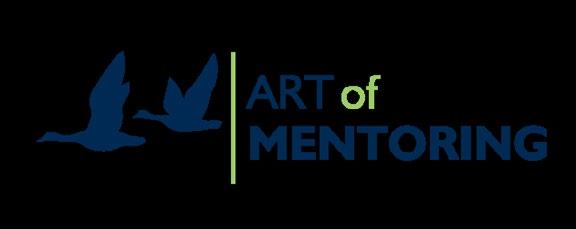
THANK YOU
Nivati's #un-EAP platform provides the easiest way to understand and manage employee mental health.

The app provides on-demand teletherapy and proactive care for employees, and real-time employee well-being data to companies.
Paychex, Inc. (Nasdaq: PAYX) is a leading provider of integrated human capital management software solutions for human resources, payroll, benefits, and insurance services.

 LEARN MORE
LEARN MORE
LEARN MORE
LEARN MORE
LEARN MORE
LEARN MORE
PARTNER WITH US
LEARN MORE
LEARN MORE
VIRTUAL
January
EVENTS & HR.COM
UPCOMING
our Upcoming Webcasts Schedule and Register Today!
our Upcoming Virtual Conference Schedule and Register Today!
Art, the Science and the Practice of Hybrid Workplaces
WEBCASTS
www.hr.com/upcoming_webcasts www.hr.com/virtualconferences View
View
The
ET REGISTER
Secret Sauce for Employee Retention? Deliver the Career Progression Opportunities Employees Want
19, 2023 11:45 AM - 12:20 PM
The
ET Leadership Succession Made Simple: Do Right and Do It (much) Faster.
January 17, 2023 11:00 AM - 12:00 PM
PM ET REGISTER Rising Minimum Wage Rates and How They May Impact Your Business
January 31, 2023 12:00 PM - 1:00
PM ET
January 24, 2023 11:00 AM - 12:00
State of Human Experience in the Workplace
WEBCASTS The
Building an Onboarding and Learning and Development Program for a Growing Company
February 15-16, 2023
AM ET
January 25, 2023 06:30 AM - 07:15
EVENTS People Strategy for the #FutureOfWork
WEBCASTS VIRTUAL
REGISTER New Ideas and Tools for Effective Performance Management
January 19, 2023
REGISTER REGISTER REGISTER REGISTER REGISTER
January 31, 2023
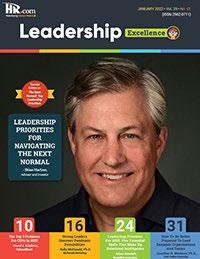
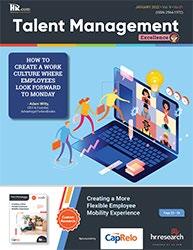




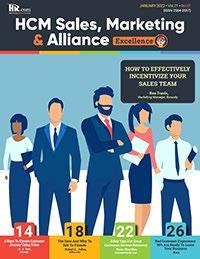

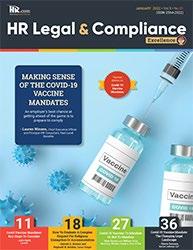
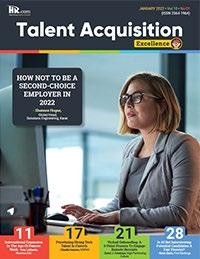
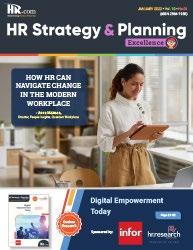
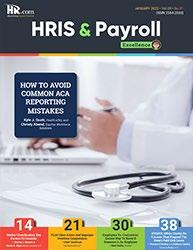

Like to submit an article? Use our online submission form or for more information go to www.hr.com/ExcellencePublications Publications 13 Targeted Publications to Reach Your Audience Informing, Educating, Enlightening and Assisting HR professionals in their personal and professional development, the Excellence series offers high-quality content through the publications!


























 Dr. Beverly Kaye CEO,
Dr. Beverly Kaye CEO,









 Linda Shaffer, Chief People Operations Officer, Checkr
Linda Shaffer, Chief People Operations Officer, Checkr








 Lydia Di Francesco, Workplace Health & Performance Practitioner, Fit + Healthy 365
Lydia Di Francesco, Workplace Health & Performance Practitioner, Fit + Healthy 365
























 LEARN MORE
LEARN MORE
LEARN MORE
LEARN MORE
LEARN MORE
LEARN MORE












